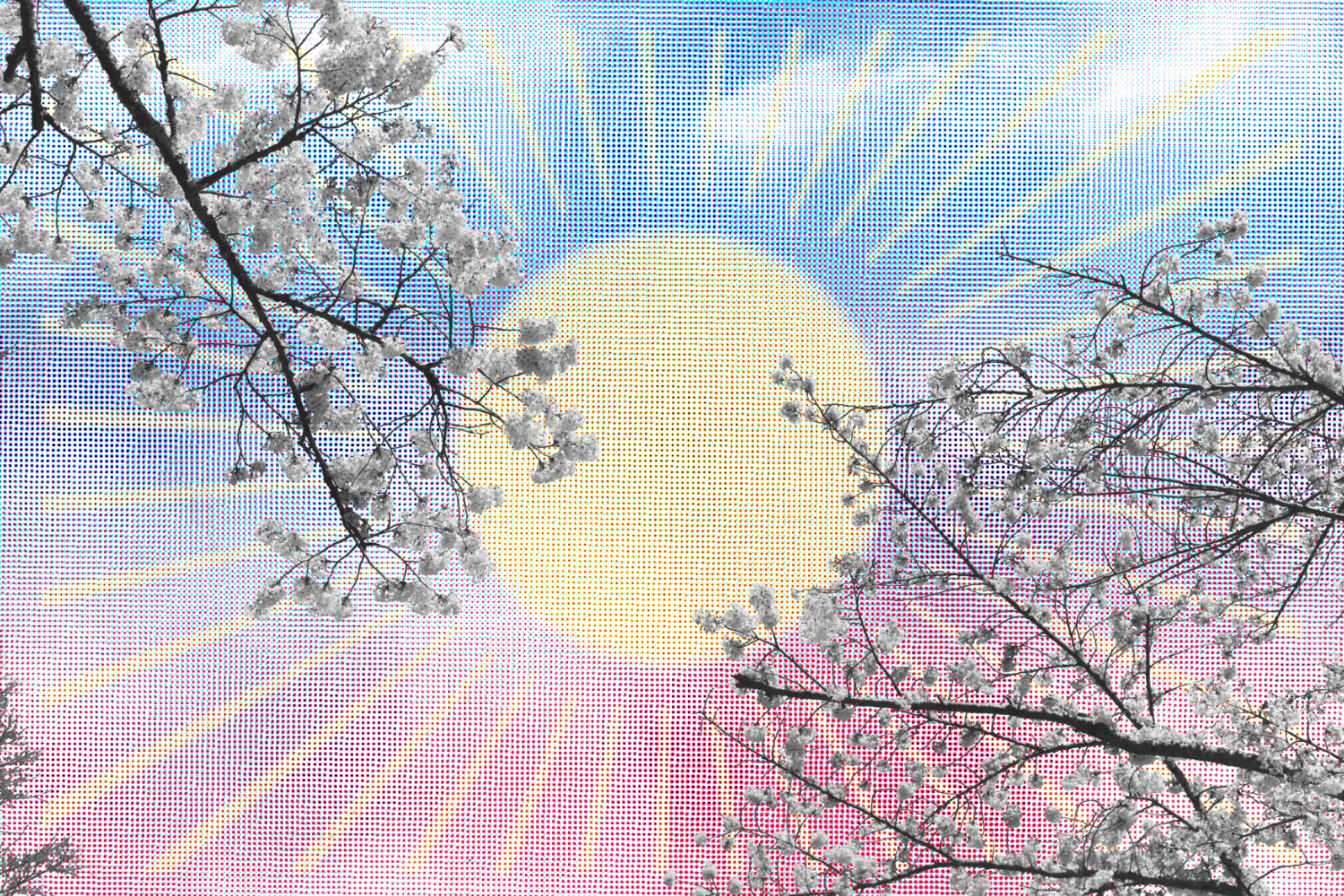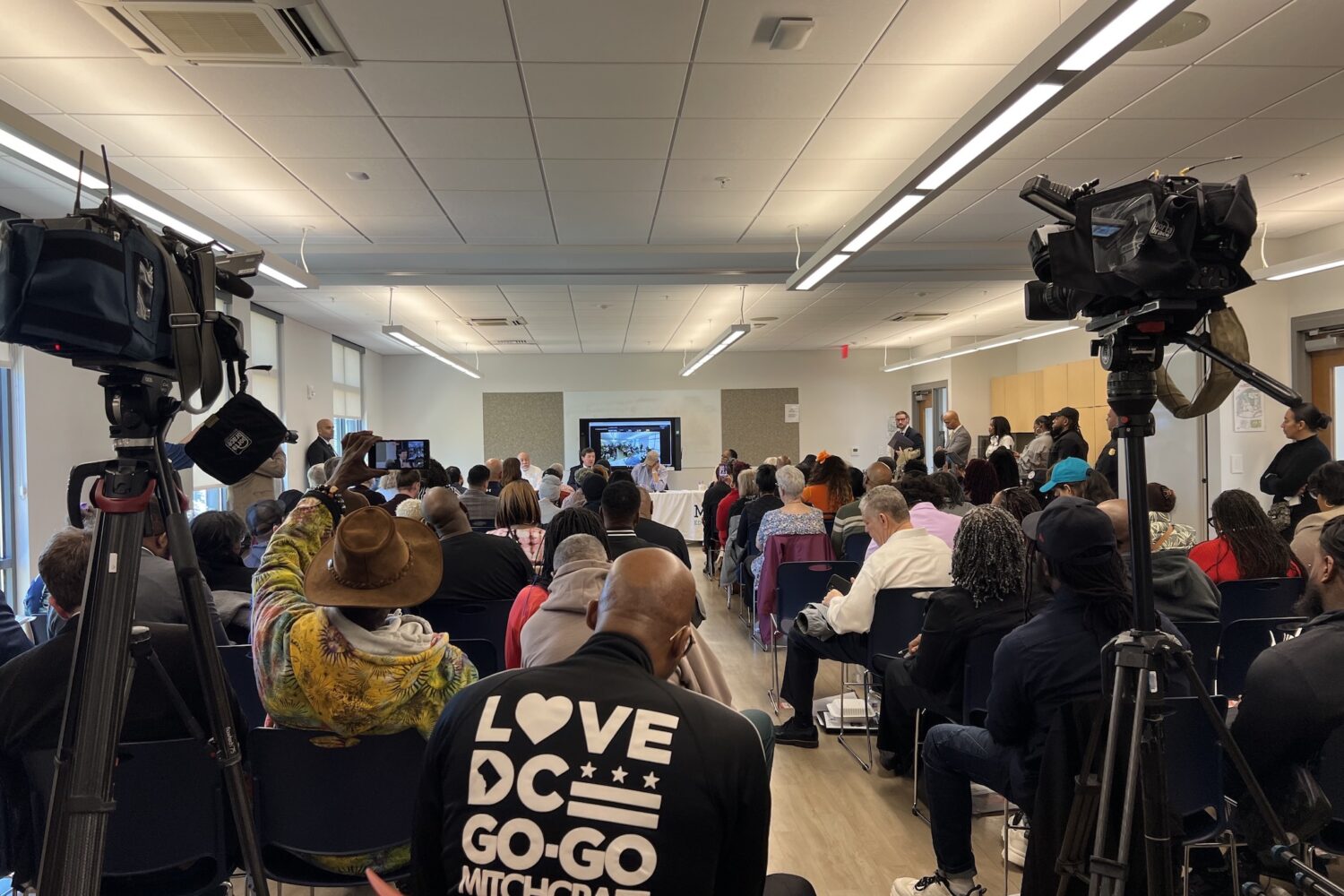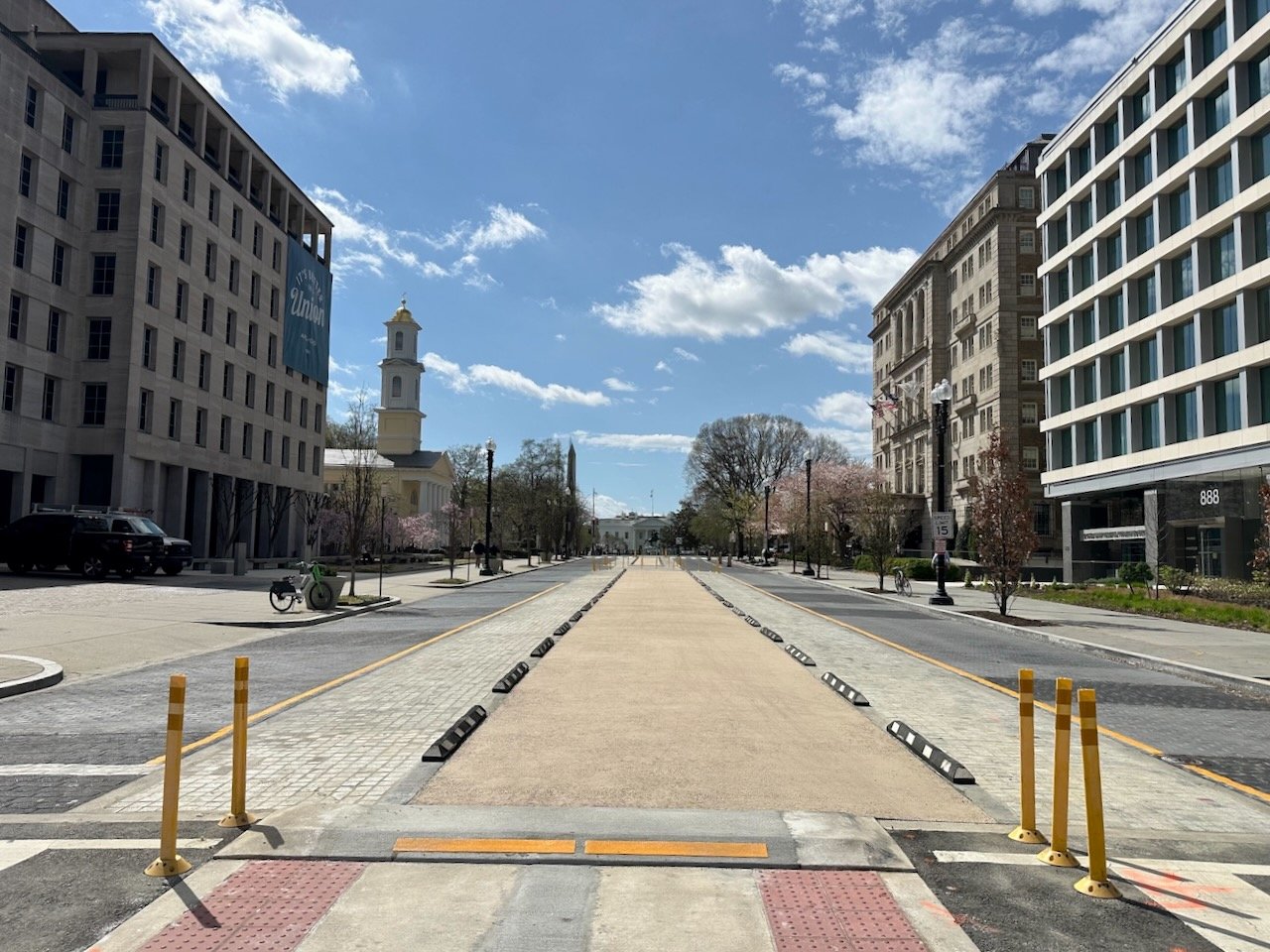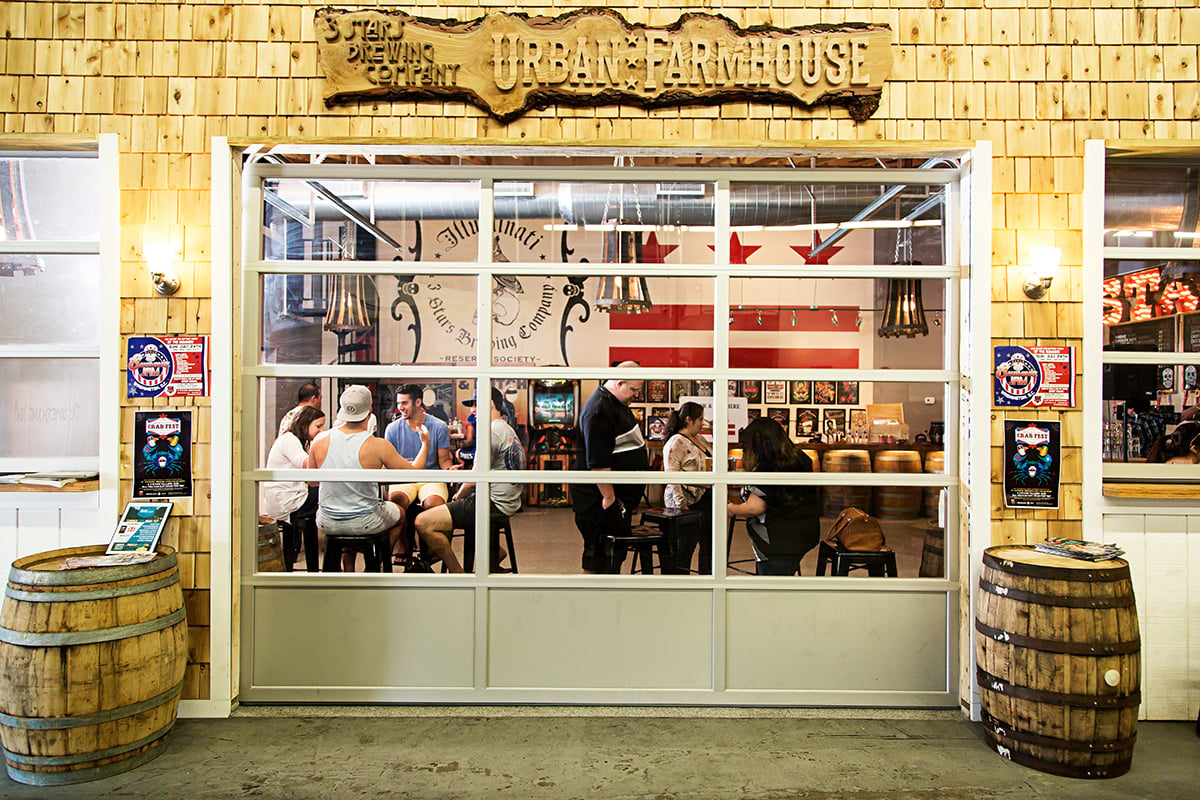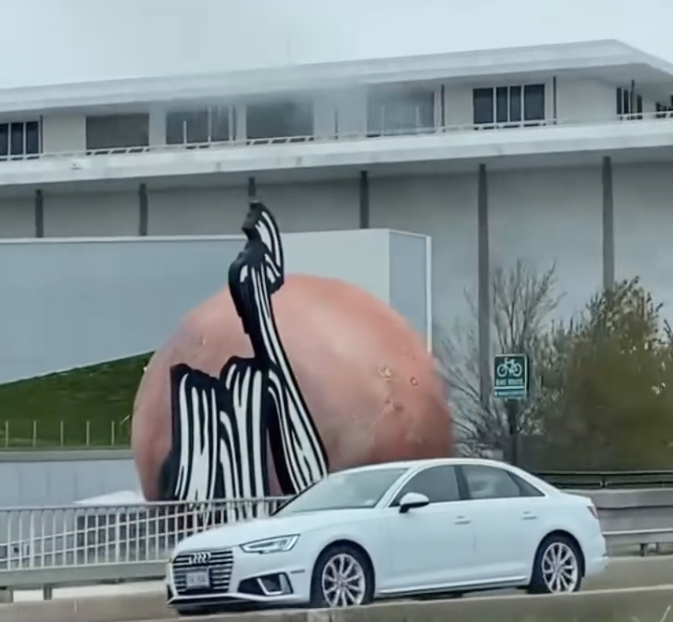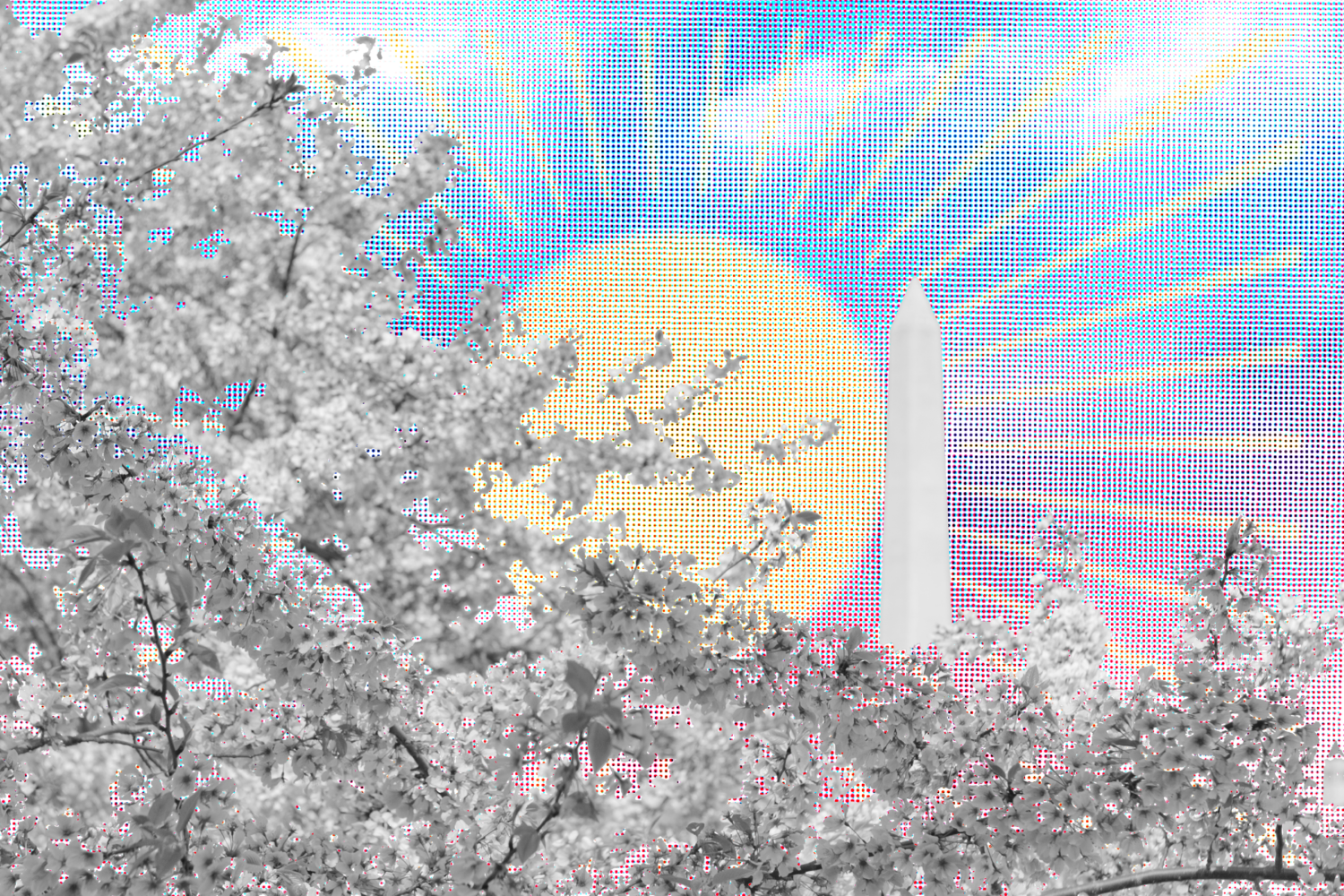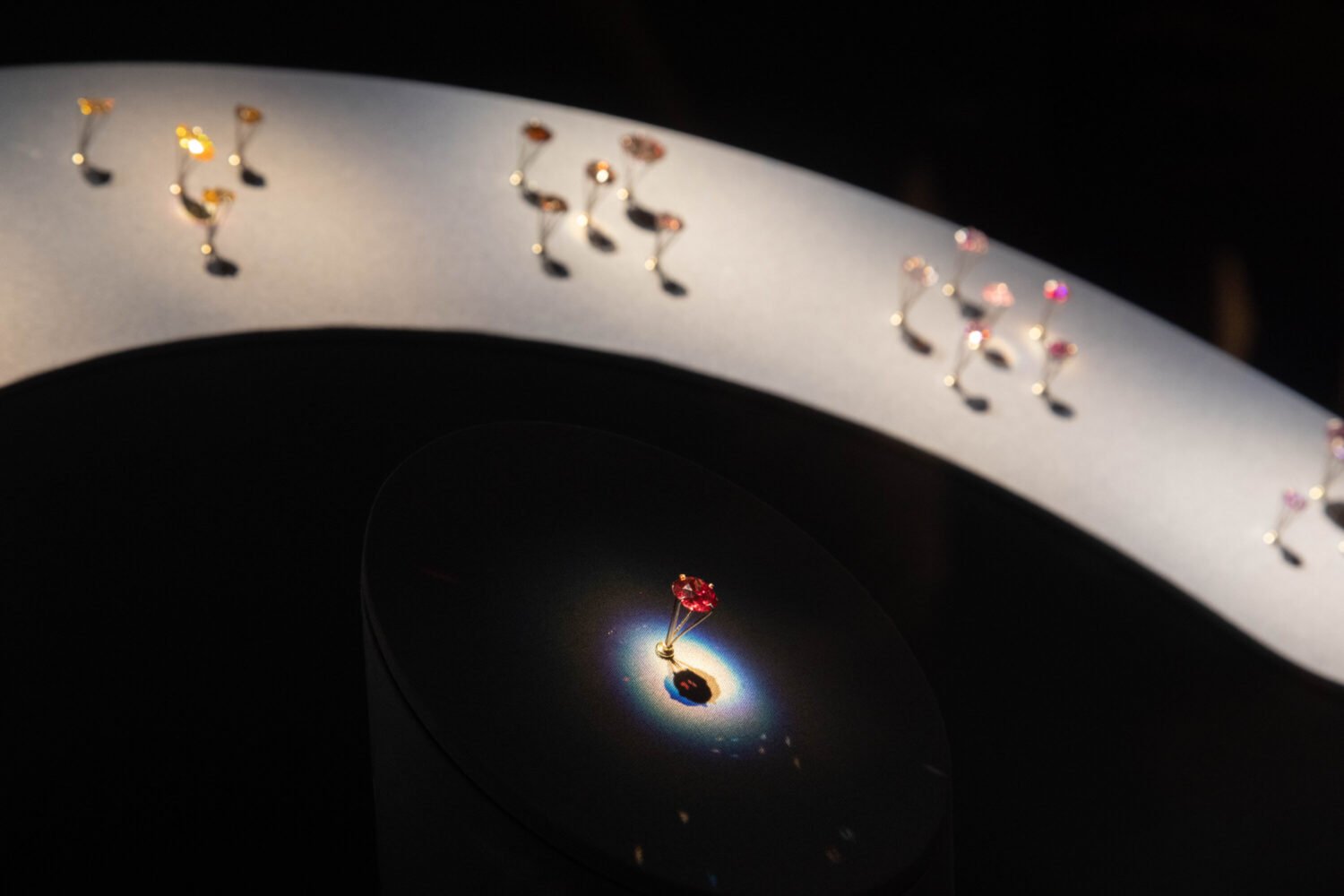Zen and the Art
It’s easy to imagine a young Andrea Way sitting in biology class a little bored, doodling all over her notebook.
Ever since she was young and saw the grids that her father, a systems analyst, had drawn on graph paper, the artist has been fascinated by patterns—patterns so dense and detailed, one can get lost inside them.
Way’s paintings and drawings—made of the tiniest geometric shapes, splats, spirals, and lines—have been compared to a map of the ocean floor or a microscopic view of cells. The 56-year-old artist, whose works have been used to illustrate scientific journals, says her dense abstractions are based on “systems and codes, the DNA strands of life.”
“Everything in life is based on some kind of system,” says Way, whose work is in collections at the Corcoran Gallery and the Smithsonian American Art Museum and Hirshhorn Museum.
One recent piece, a blue mosaiclike drawing called “Crackle,” was inspired by the pattern of the glaze the artist saw on a teacup she was sipping from. In the past several years she has added a dash of serendipity to her art, working with a kid’s Doodle Top, a spinning top with a felt marker on the end.
A San Francisco native, Way followed her parents to Washington in 1976 after her father told her she should come live with them and save money if she wanted to be an artist.
She still spends much of her time in California, where she is a student of Zen meditation, a practice that she says harmonizes with the rhythmic, deliberate nature of her art. “I liked the idea that there was a spiritual foundation for what I’d been cultivating on my own,” she says.
Way spends about a month—hundreds of hours—on each piece, wearing reading glasses and hunched over a drafting table that sits in the living room of her Cleveland Park apartment. With her pens, colored inks, and adapted tools such as an eyedropper or a piece of string, she works in small shifts—maybe an hour at a time—breaking up her day with yoga, Pilates, or weight training to keep in shape for her exacting art.
A lover of dance and music, especially classical vocal music and opera, she often finds her muse in a singer or a song. Recently, she did a series of works inspired by the voice of soprano Renée Fleming, or, more precisely, inspired by Fleming’s description of her voice as a tapestry.
In November, Way went backstage after seeing Fleming perform at Carnegie Hall and showed her one of her drawings, a luminous scarlet grid called “For Renée.” Fleming liked the piece but told the artist she “never thought of her voice as red.”
These days, Way has taken the tapestry theme a step further. She’s working on a set of drawings on Mylar that she plans to convert digitally into a real woven tapestry. The large piece will be called “Capriccio,” named after the Strauss opera in which Fleming starred at the Paris Opera in 2004. Way is planning a trip to Paris in April to look for a home for the tapestry. Her hope: the famed opera house.
Way says her Zen practice helps her see patterns in her thought, patterns that often find their way onto paper. She is drawn to the notion of being alert and mindful every waking moment, of opening her heart and mind to new ventures and ideas.
Last year, a new venture with a fine-art press resulted in her first large piece, “Passacaglia,” which was praised by critics in San Francisco where it was on display as part of a solo show. It opened her eyes to “the wonder of working large.”
Does that mean bigger and looser doodles, more expansive arcs and splats?
No, says the artist whose mantralike designs reveal themselves only as the viewer gets closer and closer.



